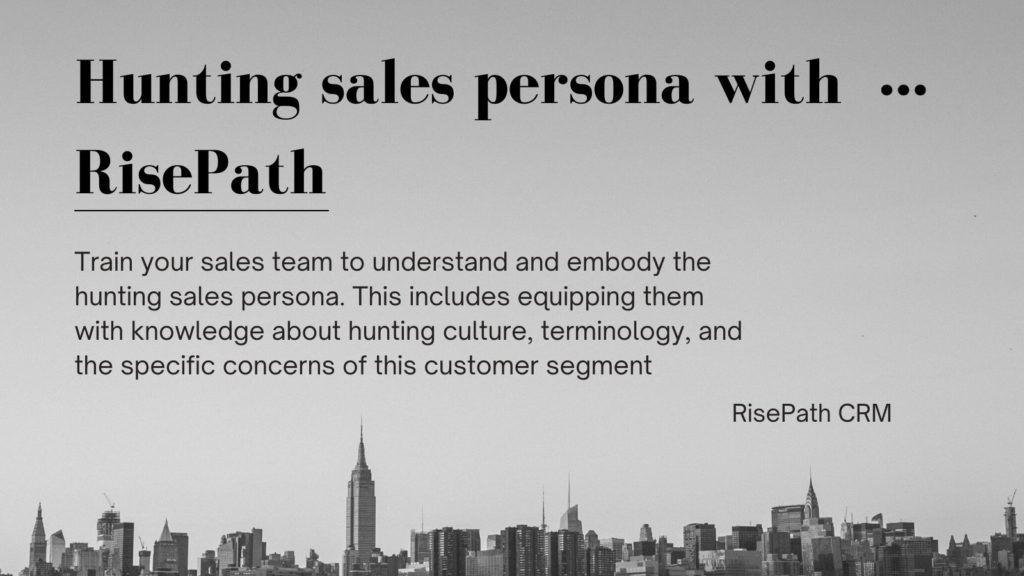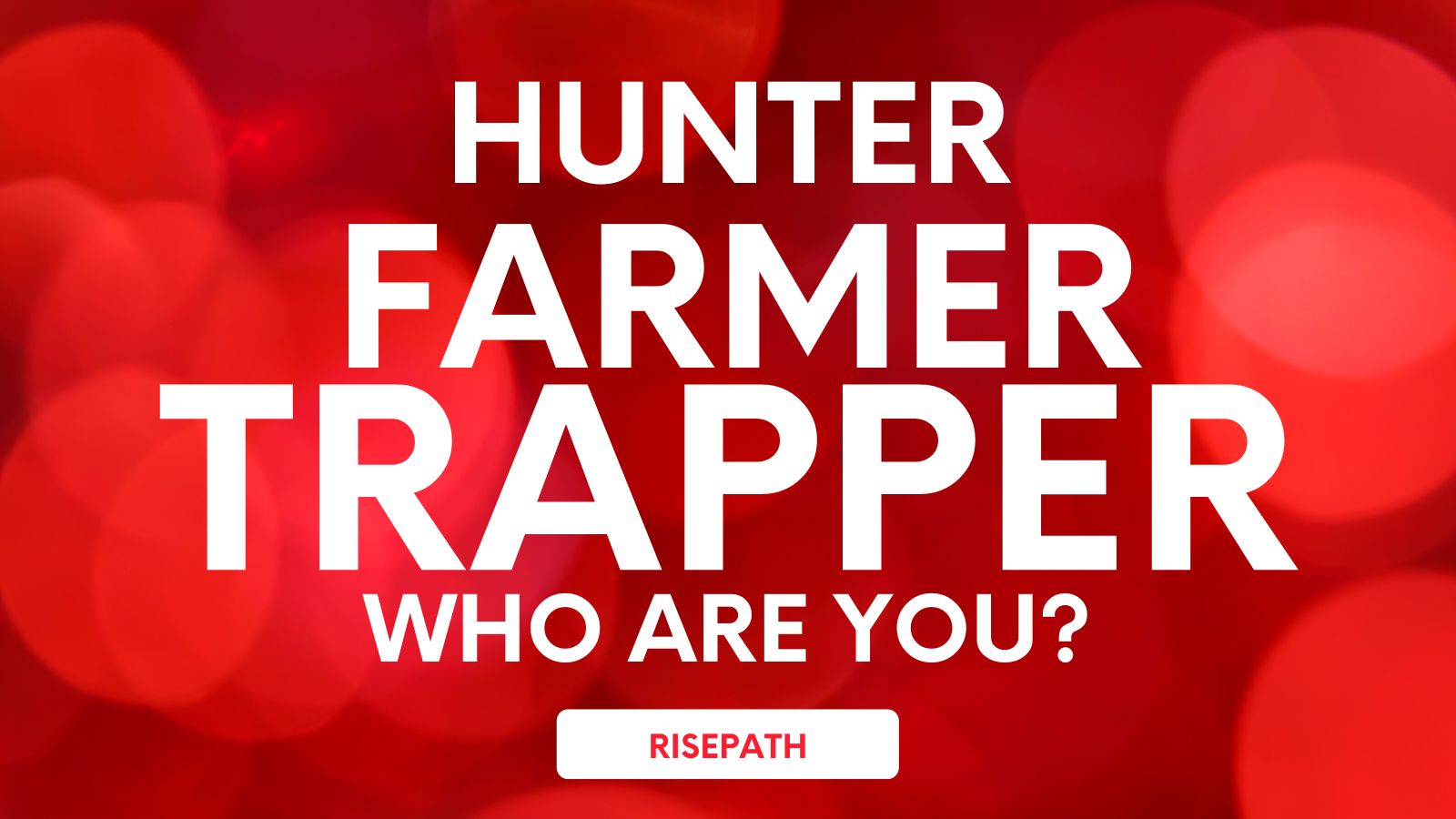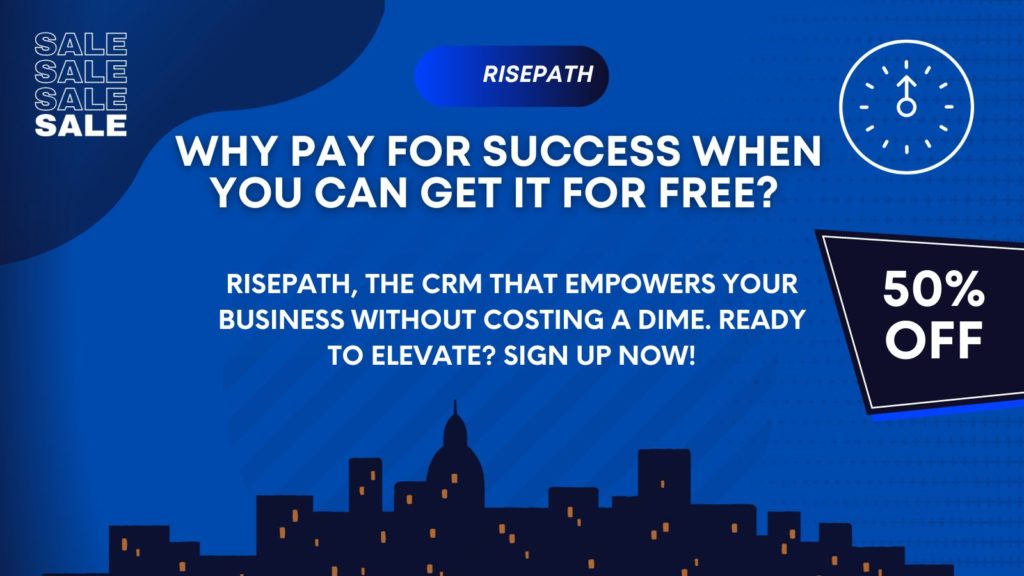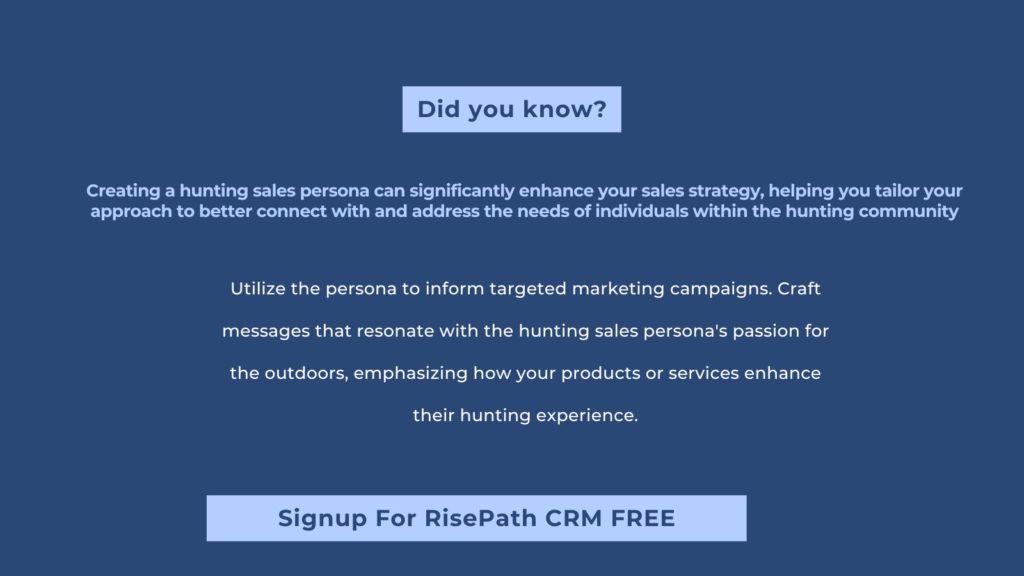Navigating the multifaceted landscape of sales can often feel like embarking on an ancient quest, where success hinges upon identifying the right persona to suit the environment and the prey – in this case, clients and customers. Within this realm lie three archetypal roles that have stood the test of time: the Hunter, the Farmer, and the Trapper.
Each of these personas embodies a unique approach to the art of selling, operational strategies, and relationship-building techniques. In today’s highly competitive market, recognising and harnessing the inherent strengths of each persona can be the key to a thriving sales career.
Whether you are a seasoned professional seeking to refine your approach, or a newcomer eager to carve out your niche, this post is your guide through the rich tapestry of sales personas.
What is the definition of a hunting sales persona?
Hunters, as the name implies, go out and hunt for leads, then work their magic to turn those leads into sales. These individuals are self-motivated (typically through commissions) and don’t mind working alone. Most of them, in fact, enjoy it that way.
The Hunter Sales Persona is a driven and results-oriented individual. They are highly competitive and motivated by the thrill of the hunt, and thrive on closing deals. Hunters prefer short-term gains and quick wins, and are comfortable with cold calling in order to find new leads and customers. They don’t conform to traditional methods, as they prefer to take risks in order to get ahead. Hunters often have an independent and entrepreneurial spirit, and are driven by the challenge of the sale. They prefer to work alone, and are independent thinkers.
For organisations looking to make quick sales and close deals, the Hunter Sales Persona is an ideal choice. They possess the competitive spirit and the risk-taking attitude needed to stay ahead in the ever-changing business environment. Hunters are highly motivated by success, and will strive to find the best outcomes for the company. They have the independent spirit to go out and find new leads and customers, and will take the initiative to close the deal.
Typical duties
Prospecting for new leads, launching cold outreach efforts, qualifying potential clients, performing product demos, overcoming objections, and negotiating.
Potential job titles
Sales Development Representative, Business Development Representative, Field Sales Representative, Account Executive.
What is Farmer Sales Persona
The Farmer Sales Persona is the perfect choice for those who need a bit of extra persuasion. They take the time to understand their customers’ needs, and prefer to focus on the long-term rather than just the immediate sale. Farmers are patient and take the time to build trust and loyalty with their customers. They are great at following up and keeping in touch, as they understand how important it is to maintain a relationship.
Also Read: The Role of Email Marketing in Customer Retention
Furthermore, they are excellent at upselling and cross-selling, as they have the ability to look at the bigger picture and suggest the best products and services for their customers. If you’re looking for a Sales Persona who will build strong, lasting relationships with your customers, the Farmer is a great choice.
Typical duties
Onboarding new customers, persuading consumers to renew their contracts, training customers how to use the product, and keeping them up to date on new features.
Potential job titles
Account Manager, Account Representative, Customer Service Representative, Customer Success Associate, Client Success Manager.
The Trapper Sales Persona
The Trapper Sales Persona is focused on customer retention and loyalty. They play an important role in keeping customers happy and ensuring that they remain with the business. Trappers take their time to get to know their customers, so they are able to spot opportunities to upsell and cross-sell existing customers.
To maintain customer relationships, Trappers use a variety of channels such as emails, calls and online resources. They also use customer analytics to measure the success of their efforts and understand the value of the data they collect.
Trappers are adept at building relationships with customers, and they understand the importance of customer loyalty. Their goal is to ensure that customers remain with the business and to ensure that they have the best possible experience.
Trappers are also skilled at acquiring social proof such as testimonials and case studies, which they may utilise to close more deals.
Typical duties
Developing content at each stage of the buyer’s journey, soliciting testimonials and reviews, establishing trust with prospects, and educating prospective consumers.
Potential job titles
Sales Associate, Director of Marketing, Marketing Manager, Marketing Specialist, Content Marketer, Content Strategist.
Discover Whether You’re a Sales Hunter, Farmer, or Trapper
Sales personas are a powerful tool that can help businesses identify their target customers and tailor their sales strategies accordingly. In particular, the Hunter, Farmer, and Trapper sales personas offer unique insights into the various approaches to sales.
The Hunter is someone who actively seeks out new customers and prospects, often through cold outreach. Hunters tend to be assertive and goal-oriented, using the latest sales strategies and technology. They typically have a short sales cycle and close more deals, but at a lower average deal size.
Also Read: Project Management Software for Your Small Business
The Farmer is someone who focuses on deepening relationships with existing customers or prospects. Farmers are patient and build trust with customers and prospects, using personalized methods of communication. They may have a longer sales cycle, but at a higher average deal size.
Lastly, the Trapper is someone who nurtures leads and waits for them to convert into sales. Trappers are analytical and methodical, relying on data-driven approaches to sales. They may have the longest sales cycle, but at the highest average deal size.
By understanding the nuances of each of these sales personas, businesses can tailor their sales strategies to fit their specific customer profiles. Utilizing the right sales persona can help businesses find their ideal customer and close more deals with higher average deal sizes.
Hunter vs. Farmer In Sales
Hunter, Farmer, and Trapper Sales Personas are three distinct methods of selling that are used to reach different goals. Hunters are the proactive salespeople who actively search out and pursue new business. They are quick-thinking and driven individuals, always searching for new prospects and opportunities.
Farmers, on the other hand, are the salespeople who nurture existing relationships and use them to create profitable partnerships. They take a patient and persistent approach to their work, relying on developing long-term relationships with their clients.
Trappers, finally, are the salespeople who wait for business opportunities to come to them. They act quickly on incoming leads and may be more reactive than proactive in their selling.
No matter which type of salesperson you are, it is important to understand the strengths and weaknesses of each approach and use them to create an effective sales strategy. Hunters need to be able to think on their feet, come up with innovative solutions, and stay ahead of the competition. Farmers need to be patient and persistent, and focus on building strong relationships.
Trappers need to act quickly and efficiently on incoming leads and be ready to seize new opportunities. All three types of salespeople can be successful if they understand their strengths and weaknesses and use them in their approach
Hunter vs. Farmer vs. Trapper
Salesperson personas are an important tool for any business looking to increase their sales and create a successful sales strategy. There are three primary types of personas: Hunters, Farmers, and Trappers.
Hunter Sales Personas are those who focus on short-term sales goals and actively seek out new opportunities and customers. They are often the most successful when it comes to generating new sales leads and closing deals. Hunters use their sharp instincts and quick decision-making skills to identify and pursue new opportunities.
Farmer Sales Personas are those who focus on cultivating relationships and building loyalty with existing customers. They are typically the most successful at building long-term customer relationships and ensuring customer satisfaction. Farmers use their problem-solving and communication skills to effectively manage customer relationships.
Trapper Sales Personas are those who focus on using data-driven approaches to identify and target potential customers. They are often the most successful when it comes to identifying and targeting high-value prospects and building effective sales funnels. Trappers use their analytical skills and knowledge of customer trends to develop effective strategies for targeting and converting customers.
By understanding and employing the different characteristics of Hunter, Farmer, and Trapper Sales Personas, businesses can utilize the strengths of each to develop an effective sales strategy that will help them reach their goals.
Can You Change Sales Personas?
When it comes to understanding sales personas, it’s important to recognise the differences between Hunters, Farmers, and Trappers.
Hunter sales personas thrive on the challenge of the chase when it comes to closing deals. They are goal-oriented, competitive, and get a thrill from the negotiation process.
In contrast, Farmer sales personas are patient and systematic. They build relationships and create long-term loyalty by taking the time to really understand their customers’ needs, and then developing a plan of action to meet those needs.
Trapper sales personas provide the bridge between Hunters and Farmers. They focus on building relationships but also have an eye for opportunity. They can help identify potential customers and then close the deal.
These three sales personas each bring something unique to the table, and understanding how to use them effectively can help businesses get the most out of their sales strategies.
What’s the difference between hunter, farmer, and trapper sales personas?
Sales teams are made up of a variety of personas, and understanding which type of salesperson is best suited to a particular product or service can help to increase your success rate. The three main sales personas are the hunter, the farmer, and the trapper.
Hunter sales personas are driven by the thrill of the chase and are focused on short-term, one-off sales. They have the skills to persuade prospects to make a purchase and are better suited to selling complex products and services.
Farmer sales personas are focused on long-term relationships with clients and are better suited to selling simpler products and services. They nurture relationships and build loyalty over time and are adept at developing trust with their clients.
Trapper sales personas are focused on generating leads and setting up appointments. They are better suited to gathering information from prospects and have the skills to build relationships and get people to open up about their needs.
Understanding which type of salesperson is best suited to a particular product or service can help to ensure that you get the best results from your sales team. By leveraging the strengths of each of the different sales personas, you can increase your success rate and boost your sales.
There are a million different ways to make a sale, but all of them fall into one of three categories: Sales you hunt, sales you farm, or sales you trap.
The Sales Personas of Hunter, Farmer, and Trapper are widely used in business today. Each of these personas has its own individual characteristics and approaches to sales.
The Hunter sales persona is proactive; they actively seek out potential customers and have a ‘hunter’ mentality. They are typically independent, goal-oriented, and assertive.
The Farmer sales persona is patient, nurturing, and great at relationship building. They cultivate relationships with existing customers to increase sales and are focused on building trust.
The Trapper sales persona takes a passive approach, waiting for customers to come to them. They have a strong understanding of their target market and a knack for capturing attention. They use traps to capture leads and drive sales.
Each of these Sales Personas has its own unique selling points and approaches. It’s important to understand the differences between them so you can choose the right approach for your business.
Is the hunter farmer model in sales accurate?
Certainly, the Hunter-Farmer model in sales has traditionally offered a binary perspective on selling styles. However, it doesn’t capture the full spectrum of sales personas. Enter the concept of the ‘Trapper.’ This third sales persona may, in fact, amalgamate the strengths of the proactive hunter and the nurturing farmer, proving to be a more efficacious approach in today’s multifaceted market environment. The Hunter is often celebrated for their aggressive pursuit of new clients, adept at identifying and seizing opportunities with a ‘strike fast, strike hard’ mentality.
Contrastingly, the Farmer excels in cultivating long-term relationships, ensuring customer satisfaction and retention through consistent nurturing and upselling.
The Trapper, on the other hand, blends strategic planning with tactical execution. They lay the groundwork to attract and engage potential customers in a more organic and sustained manner before striking at the opportune moment, encompassing the patience of the Farmer and the agility of the Hunter. This methodology is resonating increasingly with businesses that seek sustainable growth without the volatility that pure hunting or farming approaches can bring.
Unveiling the traits and tactics of these distinct sales personas can help organisations decide which model aligns best with their long-term strategic goals, ensuring that their sales teams operate at peak performance. The Trapper model highlights the evolution of sales strategies in an era that rewards the synthesis of proactive outreach and relationship-building finesse.
Hunter-Farmer Sales Model McKinsey
Building upon the pioneering “Hunter-Farmer Sales Model” posited by McKinsey, it’s pivotal to delve into the nuances of each sales persona within the business ecosystem. The “Trapper” emerges as a strategic counterpart, often overlooked yet indispensable. Whereas Hunters excel at identifying and capturing new business opportunities with their proactive and aggressive tactics, Farmers are more inclined towards nurturing existing client relationships to ensure long-term growth and retention.
The Trapper, by contrast, combines the acumen of both, adeptly laying groundwork for future deals through meticulous research and creating high-value opportunities by anticipating customer needs. They leverage data-driven insights and industry trends to attract leads, essentially “trapping” interest before it actively seeks out solutions.
Also Read: Sales management software unveiled a guide to streamlining your sales process
Understanding the symbiotic roles of Hunters, Farmers, and Trappers is crucial for organisations aiming to optimise their sales strategy and drive sustainable revenue streams in a competitive marketplace. By aligning one’s sales approach with these personas, a business can harness the full potential of its salesforce and resonate more effectively with diverse customer segments.
The Hunter Sales Persona examples
Continuing from “The Hunter Sales Persona,” we now pivot to its agricultural counterpart, the “Farmer Sales Persona.” Where the hunter excels in pursuing new leads and securing quick deals, the farmer thrives on cultivating relationships over time. This persona is all about nurturing leads, providing ongoing support, and ensuring customer satisfaction. They rely on a deep understanding of their client’s needs, sowing seeds of loyalty and trust that may take longer to mature but have the potential to yield a bountiful harvest in terms of long-term business and referrals.

The farmer’s methodical approach may not boast the immediate wins of the hunter, but their patient nurturing of clients ensures a stable foundation for sustained growth. This strategy not only enhances customer retention but also naturally allows for organic growth through word-of-mouth recommendations, which are invaluable in the digital era, where reputation is often discerned through online reviews and social media interactions.
Understading the Hunter Sales Persona
The Hunter sales persona is often characterised by their proactive and aggressive pursuit of new leads and their focus on closing deals quickly. Distinct from the farmer’s methodical approach, hunters seek immediate gains and are constantly on the lookout for new opportunities. They are typically high-energy, goal-oriented individuals who thrive on the thrill of the chase and the satisfaction of securing a new client. Their strategy is often suited for industries with shorter sales cycles or where the introduction of new products is frequent. Below are some examples that highlight the hunter persona’s strategies in action:
Example 1: Quick Fire Tactics for Tech Start-Ups
Imagine a sales professional within a tech start-up environment. The hunter adeptly utilises their arsenal of quick-fire tactics to introduce cutting-edge software solutions to the market. They map out potential leads with precision and cold-contact prospects with confidence, showcasing the immediate benefits of being an early adopter. Their relentless pursuit of new business creates an energetic buzz around the product, capturing the interest of innovation-hungry companies.
Example 2: High-Ticket Items in Auto Sales
In the world of high-ticket auto sales, the hunter excels. Knowing that new models and limited editions spur excitement among car enthusiasts, they meticulously track down potential customers, ready to enthral them with exclusive features and the allure of being the first to own the latest model. They navigate through negotiations swiftly, swiftly sealing the deal and moving on to the next conquest.
Example 3: Real Estate Ventures in Rapidly Growing Cities
The hunter thrives in the fast-paced environment of real estate in rapidly growing cities. When a new property hits the market, they immediately identify and reach out to interested parties with convincing pitches, highlighting investment potential and the urgency of buying in a hot property area. Their assertive approach ensures that they close deals well before the competition even sets up their ‘For Sale’ signs.
Example 4: Digital Marketing Services During Peak Seasons
The digital marketing arena is another playground for the hunter. As businesses scramble to optimise their online presence during peak shopping seasons such as Black Friday or Christmas, the hunter salesperson proactively offers bespoke pay-per-click campaigns and SEO services. They understand the crucial timings, tailor their proposals accordingly, and swiftly close deals to capitalise on the seasonal rush.
Example 5: Rapid Expansion in the Fitness Industry
In the fitness industry, the hunter persona identifies gyms or personal trainers that are ripe for new equipment or innovative workout classes. Their approach is direct and dynamic, quickly demonstrating the ROI of investing in new offerings and persuading them to get on board before the competition steps in. While the hunter’s approach differs significantly from the farmer’s nurturing style, both techniques contribute to a diversified sales strategy. The hunter’s aggressive tactics help to break new ground and drive immediate revenue, while the farmer works diligently to retain and grow the existing customer base.
How can hunters, farmers, and trappers collaborate?
Let’s talk about how you can get the three primary sales personas to work together to enhance sales and move your company forward now that we’ve covered the three main sales personas:
1. Determine your reps’ sales personas.
You spend a lot of time as a sales manager thinking about your company’s customers. It’s only natural that this happens. You won’t be able to create efficient sales methods if you don’t grasp what makes them tick. However, you must also consider your sales representatives.
Who are they? What is it that drives them? What do they excel at and where do they struggle? These questions can assist you to figure out who they are as a salesperson: Hunter, farmer, or trapper.
Which of your salespeople is independent? Which one has the thickest skin? And who among them is looking forward to meeting new individuals every day to market to? These are your hunters. Assign them tasks such as prospecting, cold calling, and negotiating.
Now, which of your reps is more at ease dealing with current clients? Do they have a thorough understanding of the product? Do they have a knack for forming bonds? These are your farmers.
The majority of their time should be spent onboarding new clients, creating connections, and looking for upselling and cross-selling opportunities.
2. Assign the appropriate tasks to the appropriate salespeople.
Do you enjoy watching football? Then you’re aware that Tom Brady is not asked to play defensive line for the Tampa Bay Buccaneers. What’s to stop you? He’s the best quarterback of all time for a reason. It would be a waste of his extraordinary talent to ask him to do anything else than toss touchdowns.
You’re not a head football coach; you’re a sales manager. However, you have a similar responsibility in this regard: it is your responsibility to place your team in the best possible position to succeed.
This cannot be accomplished by asking a hunter to conduct farmer activities or vice versa.
You should assign your reps assignments that are aligned with their abilities in order to develop a successful sales team. After you’ve identified each of your reps’ sales personas, this should be simple.
3. Evaluate your sales process on a regular basis.
You’ve divided your crew into three groups: hunters, farmers, and trappers, and assigned each of them duties that play to their strengths. So, what’s next?
Now you must monitor your sales process to see if it is successful. Are your sales reps doing a good job in their roles? Are they hitting their quotas and retaining customers? Is it equally important that they are content and happy? Their work will suffer if they do not.
Furthermore, studies suggest that replacing a departing employee might cost up to 200 percent of their annual compensation, depending on their job description. To put it another way, turnover is costly. If your staff are dissatisfied with their employment, they will look for new ones.
4. When new personnel is required, hire them.
You may discover that you need to patch holes in your sales process as you review it.
You might have a few top-notch hunters who bring in a lot of new business for your firm. However, you’re running low on farmers to help onboard new clients and keep them happy. Perhaps the opposite is true, and you require more hunters in order to expand your pipeline.
Whatever the case may be, you will need to hire new employees at some point. When the time comes, remember the sales personas we discussed before. You won’t have to employ a farmer to do a hunter’s job, or a trapper to do a hunter’s job, and so on.
Final thoughts
It’s not about whose sales persona is better in the hunter vs. farmer vs. trapper debate. All three are critical. As a sales manager, it’s your job to figure out which of your salespeople fit into each category and then put them in the best possible circumstances to succeed.
The use of the Hunter, Farmer and Trapper Sales Personas can be an invaluable tool for sales teams to better understand their target customers and create tailored approaches to engage them. It is important to remember that each persona is unique, as is each individual customer, and should be treated as such. By understanding the different personas, sales teams can identify which approach is most appropriate for each customer, and build relationships with them to better serve their needs.
Ultimately, the key to successful marketing and sales is understanding each customer’s individual needs and recognizing how different personas require different approaches. By using the Hunter, Farmer and Trapper Sales Personas, sales teams can create tailored and effective strategies for engaging with their customers, leading to improved customer relationships and increased sales.
Your department’s close rate and retention metrics will improve once you establish a sales strategy that capitalises on each sales rep’s natural strengths while minimising their flaws.
RisePath is flexible enough to fit every sales model
No matter what kind of salesperson you are, RisePath can help you reach your goals. If you’re a Hunter, you can use RisePath to quickly capture leads and close deals. Farmers will appreciate the ability to nurture relationships with prospects and customers. And Trappers can take advantage of RisePaths automated processes to stay on top of their workload and follow up with customers at the right time.
RisePath provides a comprehensive platform that can be adapted to suit any sales model. Its features help sales teams to streamline their workflow, manage their contacts, and track performance with reports and analytics. With its flexible platform tailored to meet the needs of all three sales personas, RisePath is an invaluable tool for any business.




Comments are closed, but trackbacks and pingbacks are open.